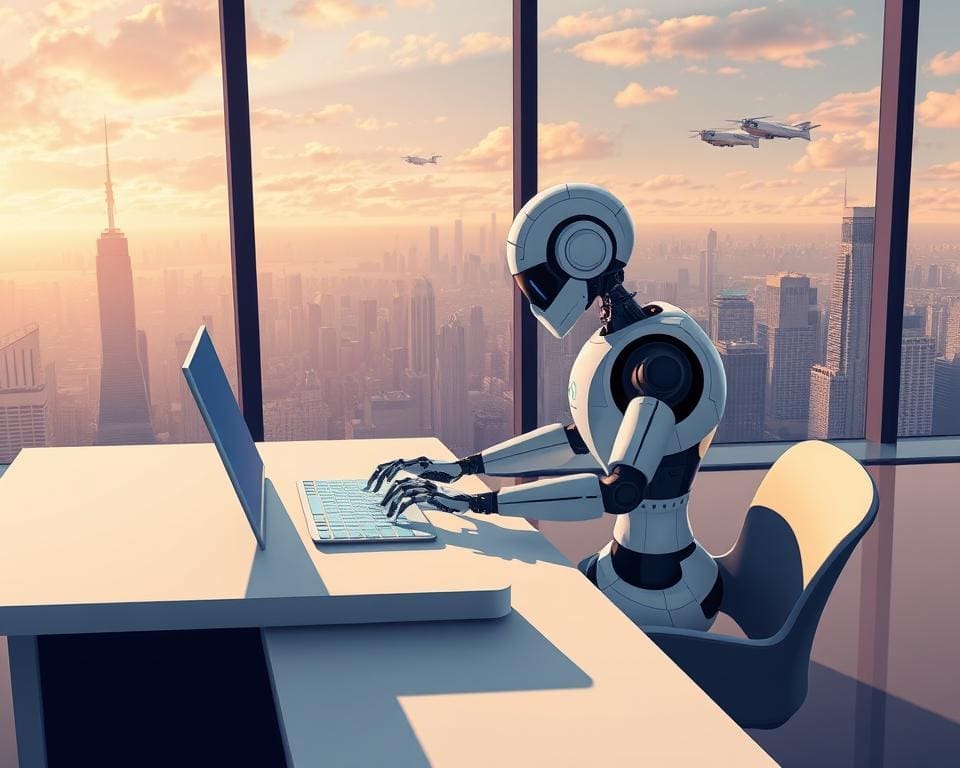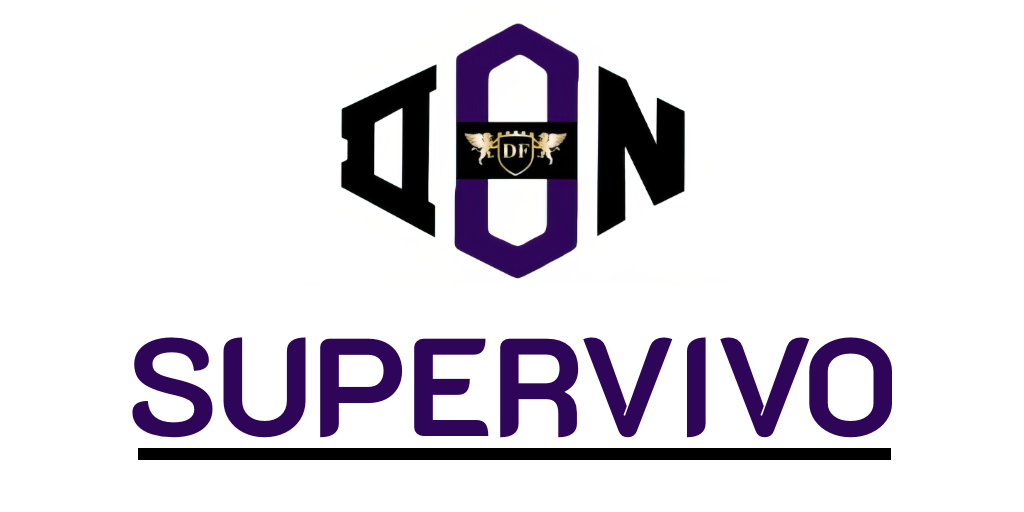As we navigate through an era increasingly dominated by technological advancements, the question arises: can AI really replace your copywriter? With the rise of AI in copywriting, businesses are keen to explore the potential of copywriting AI technology in delivering compelling content. The rapid evolution of these systems raises both excitement and uncertainty as we examine their capabilities in mimicking human writing styles. Recent studies reveal that AI can produce text that resonates with audiences, igniting curiosity about its role in creative tasks typically reserved for skilled professionals. The adventure of integrating AI into the copywriting sector invites us to reflect on the challenges and opportunities it presents, reshaping how we perceive the future of content creation.
The Rise of AI in Copywriting
In recent years, AI technologies have reshaped the landscape of content creation. This transformation is largely due to advancements in natural language processing (NLP) and machine learning. These technologies have empowered systems to grasp context, tone, and style, leading to the generation of compelling content with remarkable efficiency. Notably, tools like GPT-3, created by OpenAI, have raised the bar for automated copywriting by producing coherent, contextually relevant text that resonates with readers.

Understanding AI Technologies in Content Creation
The emergence of AI in copywriting relies heavily on robust technologies like NLP and machine learning. These innovations have significantly enhanced the AI copywriter efficiency, allowing for the rapid creation of diverse content types. Marketers increasingly utilise these AI-driven platforms to streamline workflows, producing tailored content that aligns with specific audience needs.
The Evolution of Automated Copywriting Tools
Automated copywriting has come a long way since the introduction of basic grammar and spell-checking tools. The evolution reflects a shift towards more sophisticated platforms that integrate user input to deliver personalised content. Today’s automated copywriting tools exemplify the synergy between technology and creativity, showcasing how AI can integrate seamlessly into digital marketing strategies while expanding outreach capabilities.
Can AI really replace your copywriter?
The emergence of AI technologies has transformed various aspects of content creation, particularly in the field of copywriting. Businesses increasingly harness the advantages of AI, allowing for a remarkable shift in how they approach content production. Yet, understanding the potential limitations of AI in creative writing helps maintain a balanced perspective on its role in today’s copywriting landscape.
The Advantages of Using AI for Copywriting
Employing AI in copywriting offers a range of advantages that can enhance productivity and efficiency. Key benefits include:
- Speed: AI tools can generate content at a pace that significantly outmatches human capabilities.
- Consistency: AI maintains a uniform tone and style across multiple pieces, ensuring brand voice is preserved.
- Scalability: Companies can produce vast amounts of content without compromising on quality, essential in today’s fast-paced digital environment.
- Cost-Effectiveness: Utilising AI can drastically reduce the expenses associated with hiring human copywriters, making it an attractive option for businesses.
These advantages of AI not only streamline workflow but also allow businesses to meet content demands promptly.
The Limitations of AI in Creative Writing
Despite its remarkable capabilities, there are notable limitations of AI in creative writing that warrant consideration. Although AI can generate coherent and structured text, it struggles with:
- Lack of Emotional Nuance: AI-generated content often misses the emotional depth that resonates with readers, limiting its impact.
- Creativity Constraints: AI lacks the ability to produce genuinely innovative ideas that inspire or captivate an audience fully.
- Human Touch: Creative writing often relies on personal experiences and intuitive understanding, aspects that AI cannot replicate.
This juxtaposition underscores the importance of human involvement in storytelling, which is vital for engaging audiences deeply.
Impact of AI on the Copywriting Industry
The integration of artificial intelligence into copywriting has far-reaching effects on the industry. With technological advancements reshaping traditional roles, it is crucial to understand the implications of these changes. The advent of AI introduces shifts in job market dynamics, creating both challenges and new avenues for growth.
Job Market Changes in the Copywriting Field
The impact of AI on copywriting entails significant job market changes. As automated tools take over repetitive tasks, certain positions face the prospect of redundancy. Traditional copywriters may experience anxiety regarding job security amid these transformations. Yet, the evolving landscape offers opportunities for adaptation and resilience.
- Emerging roles focusing on AI management and oversight
- Increased need for specialists in audience analysis and strategic direction
- Collaboration between human creativity and AI effectiveness
New Opportunities for Human Copywriters
Alongside the job market changes, exciting opportunities for human copywriters are arising. The emergence of AI technologies fosters a collaborative environment where human insight and creativity enhance AI capabilities. As businesses begin to recognise the value of this partnership, copywriters can assume roles that emphasise strategy and creativity.
In this transformed landscape, copywriters can embrace their strengths, focusing on brand voice, storytelling, and emotional engagement. Embracing AI can elevate the craft by freeing writers from mundane tasks, allowing them to concentrate on what they do best—connecting with audiences and crafting compelling narratives.
AI Copywriter Efficiency Compared to Humans
As the landscape of copywriting evolves, the distinction between human and AI capabilities in content creation increasingly draws attention. Many organisations are eager to harness the potential of AI, seeking out the benefits of speed and cost-effectiveness while grappling with the implications for quality. Understanding this dynamic reveals insights pivotal for any brand aiming to thrive in a competitive marketplace.
Speed and Cost-Effectiveness of AI Tools
The speed of AI tools presents a compelling advantage over traditional copywriting methods. AI can generate extensive volumes of content in a fraction of the time it would take a skilled writer. Estimates suggest that AI can produce articles up to ten times faster, demonstrating remarkable AI copywriter efficiency that not only meets tight deadlines but also lowers overhead costs. This rapid output allows teams to focus on strategic initiatives rather than the labor-intensive task of writing from scratch.
Quality of Output: AI vs Human Copywriting
While the quality of AI outputs is impressive in terms of grammar and structure, it raises critical questions about creativity and authenticity. AI-generated content can effectively convey information but often lacks the emotional depth and unique perspectives that human writers provide. For example, in campaigns requiring nuanced storytelling or brand personality, AI may struggle to match the richness and innovation found in human-produced content. This differentiation highlights the importance of considering AI as a valuable tool rather than a complete substitute for human talent.
Copywriting with AI Assistance
AI tools are transforming the landscape of copywriting, offering innovative ways to support and enhance the skills of human writers. By integrating AI into the creative process, copywriters can streamline their workflow, allowing them to focus on originality and emotional connection while technology handles research and drafting tasks. This collaborative approach is essential for forward-thinking content creation.
How AI Can Enhance Copywriting Skills
Utilising AI in copywriting can significantly enhance copywriting skills in various ways:
- Efficient research capabilities allow copywriters to gather information quickly, freeing time for creativity.
- AI-generated suggestions can inspire new ideas, sparking creativity and diverse content angles.
- Tools equipped with machine learning offer insights into audience preferences, guiding writers to produce relevant and engaging material.
By harnessing the power of AI, copywriters can elevate their output and produce material that resonates deeply with their audience.
Examples of Successful AI-Assisted Campaigns
Numerous brands have capitalised on successful AI-assisted campaigns, showcasing the effectiveness of combining human creativity and AI technology. For instance, Coca-Cola employed AI to analyse customer data, enabling tailored marketing strategies that enhanced engagement. Similarly, Netflix utilised AI algorithms to personalise user recommendations, resulting in increased viewer satisfaction and retention.
These examples underline the tremendous potential of merging copywriting with AI assistance. Companies that embrace this partnership can achieve remarkable results, making a lasting impact on their audiences.
The Future of Copywriting with AI
As we look towards the future of copywriting with AI, it becomes evident that advancements in AI copywriting technology will play an essential role in reshaping the landscape of content creation. With AI systems continuously evolving, marketers can expect a revolution in how they approach storytelling, resulting in more tailored and engaging advertising strategies. The integration of sophisticated algorithms will enable brands to craft powerful narratives that resonate with diverse audiences.
Emerging trends, including voice search optimisation and AI-generated video scripts, are poised to redefine the traditional copywriting process. These technologies not only promise to enhance efficiency but also serve to elevate the creative potential of human copywriters. The synergy between human insight and AI capabilities can lead to unprecedented levels of creativity, catering to the ever-changing preferences of consumers.
In this dynamic environment, embracing the future of copywriting with AI encourages professionals to harness the strengths of both human ingenuity and artificial intelligence. As the industry progresses, collaboration rather than competition will be the key to developing innovative content that captivates and engages audiences, paving the way for a thriving and vibrant content production ecosystem.









